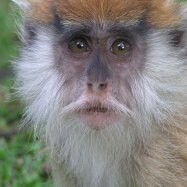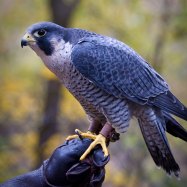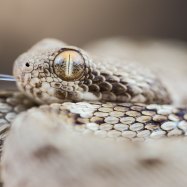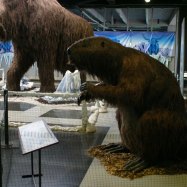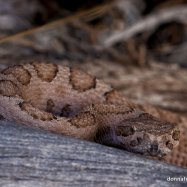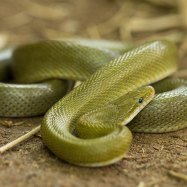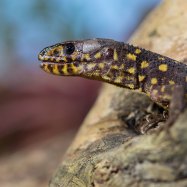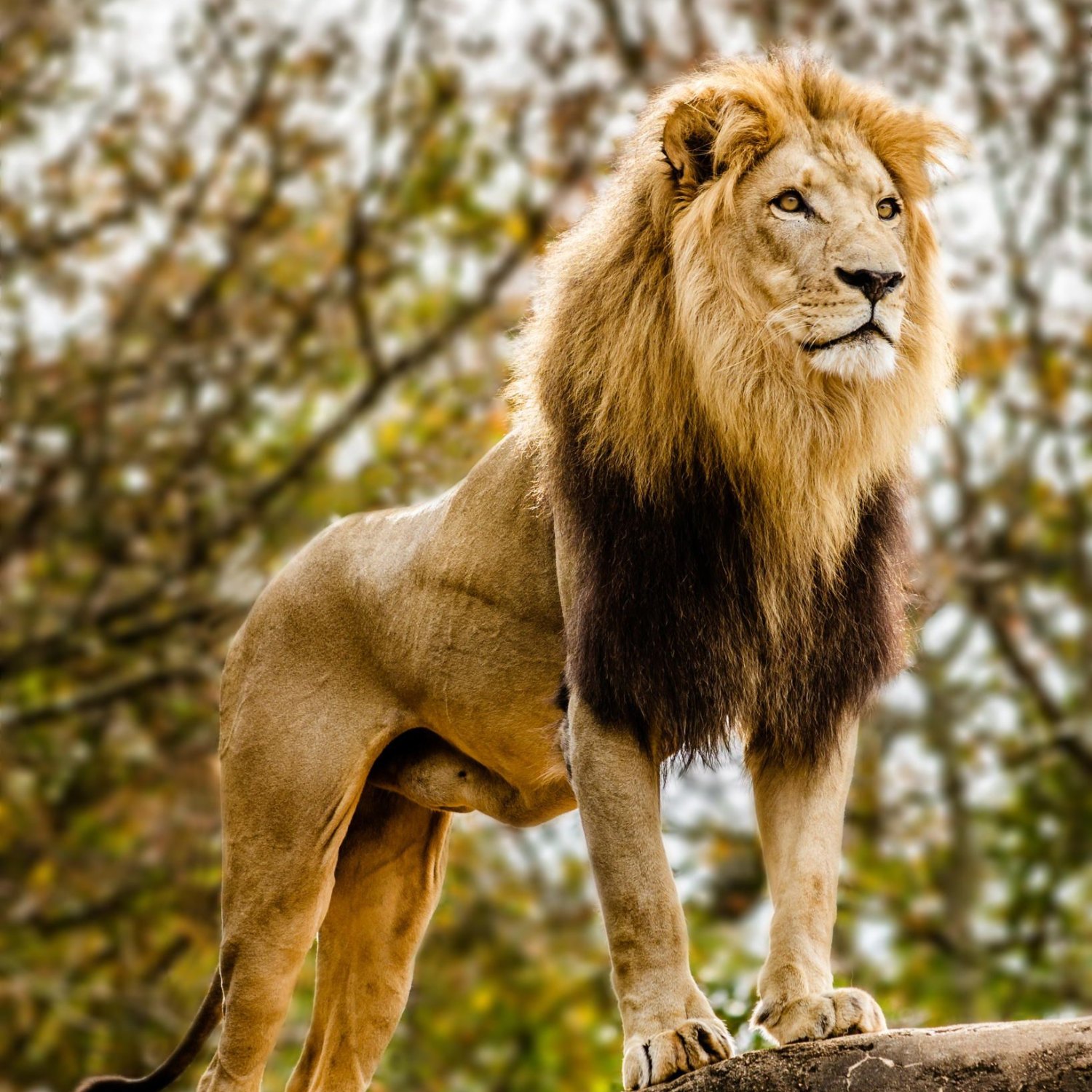
Lion
6.5 - 8.5 feet
The king of the animal kingdom, the Lion, can be found in Africa and India. With a stout and muscular body, they can measure 6.5 - 8.5 feet in length. Belonging to the Felidae family, these majestic creatures have long been revered for their strength and bravery. Their impressive roar can be heard up to 5 miles away, making them a true symbol of power and majesty. #Lion #Africa #India #Felidae
Animal Details Summary:
Common Name: Lion
Kingdom: Animalia
Habitat: Savannah grasslands, open woodlands, and scrub
The Mighty King of the Savannah: The Lion
In the vast plains of the African savannah, there is no sight quite as awe-inspiring as that of a lion, the undisputed king of the jungle. With its powerful build, majestic appearance, and fierce demeanor, the lion has captured the imagination of humans for centuries. Often referred to as the "jewel of the jungle," this magnificent creature has become a symbol of strength, courage, and royalty in many cultures. Despite being one of the most widely recognized animals in the world, there is much more to the lion than meets the eye Lion. In this article, we will take a closer look at the characteristics, behavior, and habitat of the mighty king of the savannah – the lion.Scientific Classification
Known by its scientific name, Panthera leo, the lion belongs to the Animalia kingdom, Chordata phylum, Mammalia class, and Carnivora order. It is a member of the Felidae family, which includes other big cats like tigers, leopards, and jaguars. With its muscular build, sharp teeth, and retractable claws, the lion is a formidable predator and one of the largest carnivores in the world.Habitat and Distribution
Lions are primarily found in the African savannah, a vast and open grassland ecosystem that spans over 30 countries in the continent. They are also known to inhabit open woodlands and scrub regions, making them highly adaptable to different environments. In Africa, lions can be found in countries such as South Africa, Kenya, Tanzania, and Botswana. However, a small population of Asiatic lions can also be found in the Gir National Park in India, making them one of the only two remaining lion species in the world.Appearance and Body Shape
One of the most striking features of a lion is its tawny-yellow fur, which gives it its iconic "golden" hue Leafcutter Ant. This fur is thick and short, providing excellent insulation against the hot African sun. Coupled with its white belly, this coloration not only adds to the lion's regal appearance but also helps it to blend in with its surroundings while hunting.The lion's body is stout and muscular, suited perfectly for its role as a predator. Its front legs are more robust and powerful than its back legs, allowing it to take down large prey such as wildebeest or buffalo. An adult male lion can weigh anywhere between 330-550 lbs, while females are slightly smaller, typically weighing around 265 lbs. With a length of 6.5-8.5 feet, the lion is one of the longest big cats, and its muscular body can propel it to an impressive speed of 50 mph in short bursts.
Diet and Feeding Method
As an apex predator, the lion has a crucial role to play in maintaining the balance of its ecosystem. They are primarily nocturnal hunters, using the cover of darkness to hunt for prey. Lions are opportunistic hunters, which means they will target any potential food source they encounter. Their preferred prey includes large herbivores such as wildebeest, zebras, buffaloes, and impalas.The lion's hunting strategy typically involves stalking its prey and ambushing it before it can escape. Male lions use their strength and powerful jaws to bring down large prey, while females work together in teams to take down smaller animals. Once the prey is immobilized, lions use their strong canines to deliver a fatal bite to the throat or neck. They are known to consume large quantities of meat in one sitting, and a pride of lions can eat up to 40 pounds of meat in a single day.
Social Structure and Behavior
Lions are known for their social behavior, living in groups known as prides. A typical pride consists of one or two males, several females, and their offspring. Male lions usually form coalitions and take turns to mate with females in the pride, ensuring a strong gene pool for the next generation. Females, on the other hand, are responsible for raising cubs and hunting for their pride.While male lions are known for their fierce nature, they are also quite affectionate towards their pride members, often nuzzling and grooming them. Females within the pride also develop strong bonds and work together to take care of their young ones. This social structure not only helps with hunting and survival but also provides emotional support and companionship for the lions.
Conservation Status
Sadly, the lion population has declined significantly over the years, and they are now classified as a vulnerable species by the International Union for Conservation of Nature (IUCN). The main threats to lions include habitat loss, poaching, and human-lion conflicts. In some parts of Africa, lions are considered a threat to livestock and are hunted or poisoned by farmers to protect their livestock. This, along with trophy hunting and illegal trade of lion body parts, has led to a drastic decrease in their numbers.Fortunately, there are many conservation efforts in place to protect lions and their habitats. Organizations such as the African Wildlife Foundation and World Wildlife Fund are working towards educating locals and implementing sustainable solutions to protect not only lions but also other wildlife in their natural habitats. Increased awareness and responsible tourism can also play a crucial role in the conservation efforts for lions.
Interactions with Humans
Lions have had a significant impact on human culture throughout history, featuring in ancient texts, art, and folklore. They are also symbolic in many cultures, representing strength, bravery, and royalty. In ancient Egypt, the lion was worshipped as a sacred animal, symbolizing the pharaoh, while in Europe, lions have been featured as heraldic symbols on coats of arms for centuries.In modern times, lions are also a significant tourist attraction, with thousands of people embarking on safaris to see them in their natural habitats. This provides a significant economic benefit for the countries where lions reside and contributes to conservation efforts.
Conclusion
The lion, with its majestic appearance, powerful build, and unique social behavior, continues to fascinate people worldwide. From the African savannah to its representation in art and culture, the lion has cemented its place as the king of the jungle, commanding respect and admiration. While their population is declining, efforts are being made to protect these magnificent creatures and ensure their survival for future generations. As we continue to learn more about lions and their role in maintaining the balance of their ecosystem, it is crucial that we work towards conserving this resilient and iconic species.

Lion
Animal Details Lion - Scientific Name: Panthera leo
- Category: Animals L
- Scientific Name: Panthera leo
- Common Name: Lion
- Kingdom: Animalia
- Phylum: Chordata
- Class: Mammalia
- Order: Carnivora
- Family: Felidae
- Habitat: Savannah grasslands, open woodlands, and scrub
- Feeding Method: Carnivorous
- Geographical Distribution: Sub-Saharan Africa, with a small population in India
- Country of Origin: Africa
- Location: Africa, India
- Animal Coloration: Tawny-yellow, with a white belly
- Body Shape: Stout and muscular
- Length: 6.5 - 8.5 feet
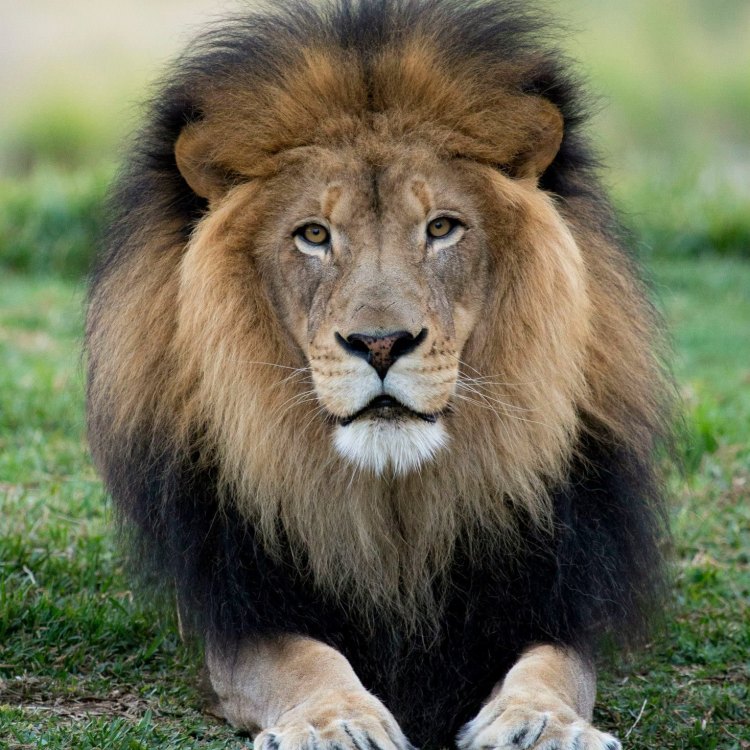
Lion
- Adult Size: 4.5 - 6.5 feet
- Average Lifespan: 10 - 14 years
- Reproduction: Sexual
- Reproductive Behavior: Polygamous
- Sound or Call: Roars, grunts, growls, meows
- Migration Pattern: Non-migratory
- Social Groups: Prides
- Behavior: Mostly nocturnal, apex predator, highly social
- Threats: Habitat loss, poaching, human-wildlife conflict
- Conservation Status: Vulnerable
- Impact on Ecosystem: Maintains balance in the ecosystem by controlling herbivore populations
- Human Use: Cultural significance, tourism
- Distinctive Features: Mane around the head of adult males
- Interesting Facts: Lions are the only big cats that live in groups, known as prides.
- Predator: No natural predators in the wild
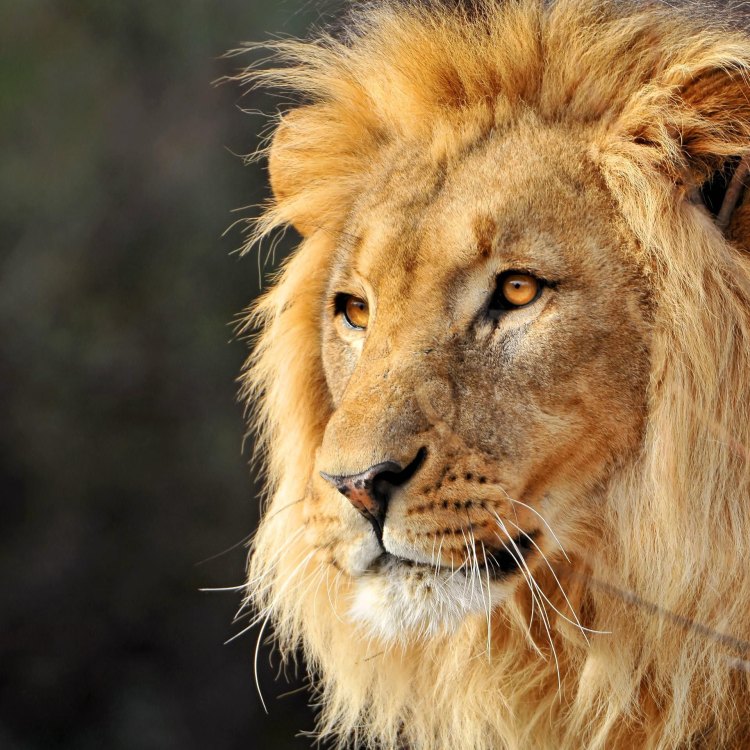
Panthera leo
The Mighty Lion: A Fascinating Apex Predator
The lion, scientifically known as Panthera leo, is a majestic and powerful mammal that has long captured the fascination of humans. It is a staple figure in literature, art, and culture, often depicted as the king of the animal kingdom. From its distinctive roar to its awe-inspiring presence, the lion is a symbol of strength, courage, and resilience. But beyond its regal appearance, the lion has many unique and intriguing features that make it one of the most fascinating animals in the world PeaceOfAnimals.Com. In this article, we will delve into the world of the lion – exploring its physical characteristics, behavior, threats, and conservation efforts.Size and Lifespan
On average, adult lions can reach a length of 4.5 to 6.5 feet and can weigh anywhere between 265 to 420 pounds, with males being larger than females. They are the second-largest living cat species after tigers, making them a formidable and awe-inspiring sight. Despite their size, they are incredibly agile and can reach speeds of up to 50 miles per hour when chasing their prey.
The average lifespan of a lion in the wild is 10 to 14 years, while they can live up to 25 years in captivity. However, this lifespan can vary depending on factors such as habitat, availability of prey, and human interference. Female lions tend to live longer than males as they do not face the same level of danger and aggression from other males Leopard Shark.
Reproduction and Social Behavior
Lions are sexually reproductive, meaning they require a mate to produce offspring. The reproductive behavior of lions is polygamous, with dominant males mating with multiple females within their pride. A pride is a social group of lions that usually consists of 5-15 females, their young, and 1-2 dominant males.
The reproductive cycle of a lion can vary depending on factors such as food availability and climate. Female lions can go into estrus (heat) at any time, and this can last for 4 to 5 days. If successfully mated during this time, the female will give birth to 1-6 cubs after a gestation period of 110 days.
The cubs are born blind, and it takes about 5-6 weeks for them to open their eyes. They are entirely reliant on their mother for survival during this time. Once the cubs reach 2 to 3 years old, they leave the pride to find their own territory, forming a coalition with other young males or becoming nomads until they are strong enough to challenge for their own pride.
Behavior and Communication
Lions are known to be mostly nocturnal, hunting and resting during the cooler hours of the day. However, in some areas where they do not face much disturbance from humans, they may also be active during the day. They are highly social animals and have a complex system of communication.
The most iconic sound associated with lions is their unmistakable roar, which can be heard up to 5 miles away. However, lions also make other sounds such as grunts, growls, and meows to communicate with each other. Roars are mainly associated with males and are used to assert dominance and attract females, while females use low-pitched sounds to communicate with their cubs.
Threats and Conservation Status
Lions, like many other wildlife species, face numerous threats in the wild. The most significant threats to their survival are habitat loss, poaching, and human-wildlife conflict. As human populations continue to expand, lion habitats are being encroached upon, leading to a decline in their prey and an increased likelihood of human-wildlife conflict.
Poaching is also a significant threat to lions, as their body parts are highly valued in traditional medicine and as trophies. Lions are also affected by the illegal trade of their body parts, such as bones and skins, which are often sold on the black market. This not only impacts the lions themselves but also the fragile ecosystems they inhabit.
As a result of these threats, lions have been classified as Vulnerable on the IUCN Red List of Threatened Species. Their populations have decreased by 43% over the past 21 years, and they currently only occupy 8% of their historic range. It is estimated that there are only around 20,000 lions left in the wild, making conservation efforts crucial for their survival.
Impact on Ecosystem
Lions play a crucial role in maintaining the balance in their ecosystems. As apex predators, they are at the top of the food chain, and their presence helps regulate the population of herbivores, such as antelopes and zebras, by preying on weaker individuals. This helps to prevent overgrazing and ensures a healthy and diverse ecosystem.
Apart from regulating the population of herbivores, lions also play a vital role in the ecosystem by redistributing nutrients through their kills. After a lion hunt, other animals, such as scavengers, gain access to the remaining carcasses, ensuring that every aspect of the ecosystem is utilized.
Human Use and Cultural Significance
Lions have long been a part of human culture and have been depicted in various forms of art, literature, and religion. They hold significant cultural and spiritual importance for many communities in Africa, where they are found. They are also a popular symbol in heraldry and are often used in coats of arms or flags to represent strength and courage.
The tourism industry also heavily relies on the presence of lions in the wild, generating revenue and providing employment opportunities. Many people travel to wildlife reserves and national parks in Africa to catch a glimpse of the iconic "king of the jungle." Wildlife tourism also helps fund conservation efforts, providing protection for the lion's habitat and populations.
Distinctive Features and Interesting Facts
Lions have several distinctive features that set them apart from other big cats. The most notable of these is the mane around the head of adult males, which can range from blonde to black and can grow up to 16 inches long. This thick hair serves as protection, particularly during territorial battles with other males.
Another notable feature of lions is that they are the only big cats that live in social groups, known as prides. This makes them unique compared to other big cats, such as tigers and leopards, who are solitary animals. The pride structure allows lions to hunt larger prey, defend their territory, and care for their cubs more efficiently.
It is also interesting to note that, unlike many other predators, lions do not have any natural predators in the wild. This is due to their size, strength, and social structure, making them equipped to handle most threats. However, human activities and interference have become the biggest threat to their survival, endangering their future in the wild.
In Conclusion
The lion is a fascinating and unique animal, with its roaring presence and intricate social structure. However, despite its cultural significance and iconic status, the lion faces numerous threats that endanger its survival. With increasing conservation efforts, we can work towards ensuring that this magnificent apex predator continues to roam the African savannahs and play a crucial role in maintaining the delicate balance of its ecosystem. It is up to us to protect and preserve the mighty lion for generations to come.
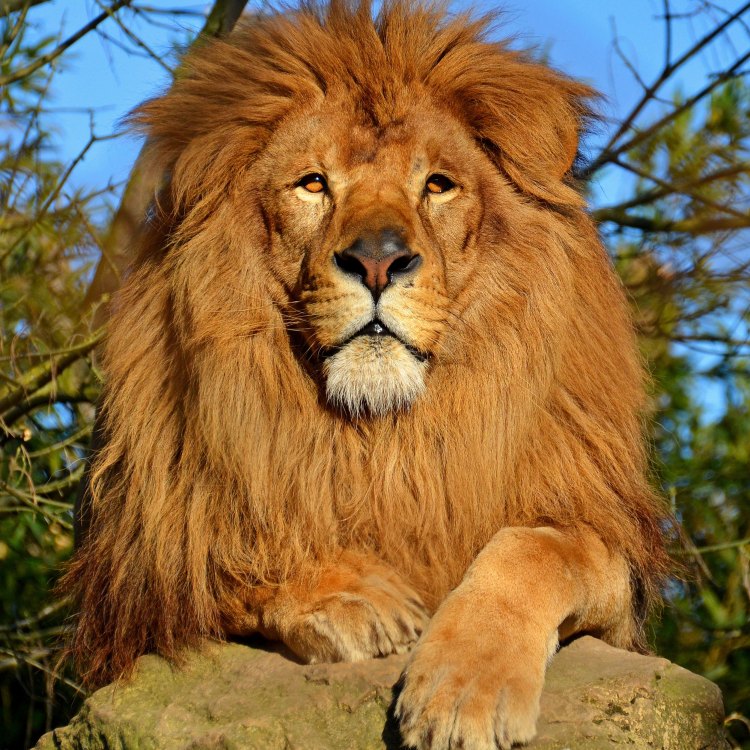
The Mighty King of the Savannah: The Lion
Disclaimer: The content provided is for informational purposes only. We cannot guarantee the accuracy of the information on this page 100%. All information provided here may change without prior notice.

